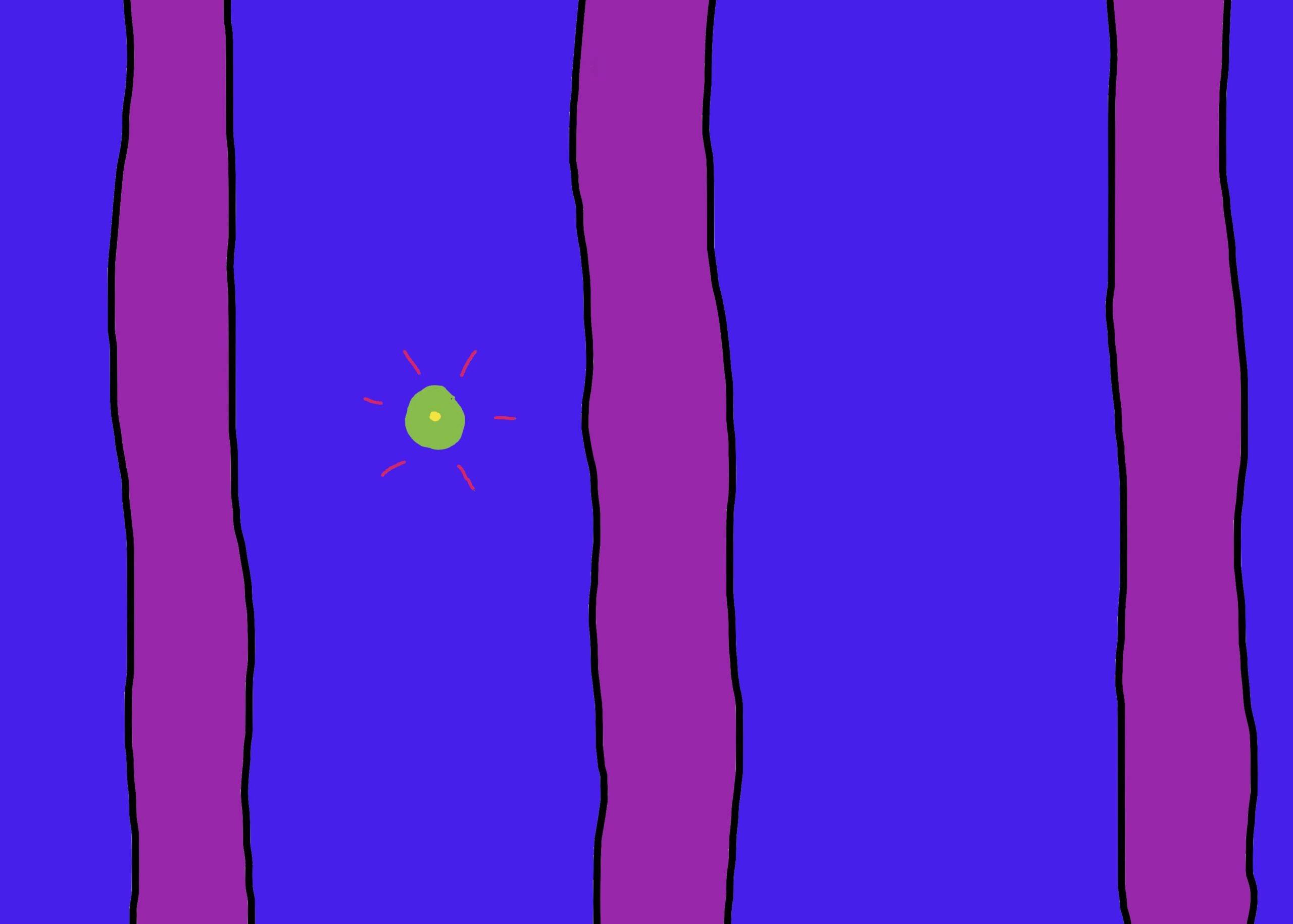Accommodations
“What do you mean the inn’s haunted?” my wife Meredith asks as we peer up at the structure before us.
What I mean is that the 17Hundred90 Inn—one of Savannah, Georgia’s oldest inns, as well as the one where I’d booked us a room—is home to a ghost named Anna.
According to legend, Anna was married to a man she did not love. Soon after, she fell for a visiting sailor, and as she watched his ship sail back to sea, she flung herself from the property’s third story window—the present-day site of room 204, the most haunted room in the inn.
I relay all this to my wife. “But don’t worry. I mean, what are the odds we get the haunted room?”
(The odds are one in fourteen.)
We make our way to the front desk, where the attendant hands over the key.
“You’ll be in room 202,” she says.
“Thank you,” I say.
Thank God, I think.
Not because I’m not game for ghosts, but because Meredith has been clear on this: there are to be no ghosts on this trip. No ghosts, no murders, no anything worthy of note.
“This is supposed to be relaxing for both of us,” she reminded me in the days leading up to our trip. “Not some excuse to write an essay.”
I had nodded, though throughout our decade of marriage, everything had become an excuse to write an essay.
Squeaking our way up the stairs, we navigate through the narrow halls before arriving at our interior room. We enter, relieved to see that it looks just like the room in the pictures we’ve viewed online. Four-post bed, fireplace, mini-fridge, and couch.
“This looks… fine,” I say, glancing toward Meredith for approval.
“Yeah,” she agrees. “This’ll be great.”
I collapse to the couch, glancing up to notice a skylight overhead. It is the closest thing we have to a window, and, aside from the door, our only means of escape.
“What’s this do?” Meredith asks, redirecting my attention to a bafflingly placed doorbell midway up the wall. She presses it.
Nothing—no buzz, no ring, no secret door swung wide.
What if we’ve just summoned Anna out of hiding? I wonder. What if we’ve welcomed the ghost into our room?
I reach for my pen, make a note, then follow Meredith into the hallway.
We’ve barely turned the corner toward room 204 when she sees the ghost of Anna peering out the window toward the street.
“Oh my God…”
Following two steps behind, I see her for myself: not the ghost of Anna, but the mannequin version, complete in a white dress and half-shrouded behind a lace curtain. Her plastic hands rest on the windowsill, her painted eyes peering toward the shore.
“Jesus,” I say, rushing past. “Savannah sure loves its ghosts.”
Transportation
A few drinks in, we begin to see the hearses. The first weaves past a horse-drawn carriage, coming to a halt before one of the many haunted houses along the squares.
It’s a ghost tour. In Savannah, it’s always a ghost tour. Because you can’t claim to be “America’s Most Haunted City” without some guarantee of seeing ghosts.
When I booked the tickets three months prior, I knew nothing of Savannah’s spooky past. We’d selected the sleepy southern town for our romantic getaway for the same reasons others do: its tree-lined squares, its endless history, and weather that—even on the last day of January—doesn’t require a coat. But in truth, we might’ve chosen any place. All we really wanted were a few days away from the kids, and the dog, and a life that teetered toward routine.
That night we embrace our anonymity, taking full advantage of the city’s open container laws. We sip the Blue Moon in our cups as the real blue moon glows overhead. Blame it on the beer, the warm air, or the new geography—whatever the cause, for a few hours that evening, we conjure up versions of our former selves. Suddenly we are all sparkle and vim again, our bodies radiating a strange heat.
“Come on,” I whisper, nodding toward the hearse, “let’s sneak over for a listen.” Despite her no-ghost policy, Meredith follows. Together, we slink toward the tour, catching every word we can as the guide shares with the open-air passengers the horrors that once befell the property.
We don’t hear much. And as I stare up at the imposing home before us, we don’t see much, either. Just some house where some ghost lives, apparently.
The passengers swivel in their raised seats—first to the left, then to the right—and then lift their booze-filled cups to their lips.
No matter the city, no matter the ghost tour, the mantra is always the same: “You’ve got to drink spirits to see spirits.”
And so they do. And so we do.
I reach for my pen and wait.
Attractions
In the early morning hours of May 2, 1981, antiques dealer and historical preservationist Jim Williams shot and killed his assistant and lover Danny Hansford. The tragedy occurred at the Mercer Williams House in Savannah’s historic district, on the corner of Monterrey Square. After four trials, Williams was eventually found not guilty of murder. He discharged his weapon, the jury ruled, in self-defense.
It’s all documented in John Berendt’s Midnight in the Garden of Good and Evil—a book that, throughout the 1990s, enjoyed a record-setting 216 weeks on the New York Times Best Sellers list. I’d read it in anticipation of our trip, though by book’s end, still wasn’t sure what had prompted the story to catch fire. In her 1994 review in the New York Times, critic Glenna Whitley offered her take, remarking that Berendt’s work was “the first true-crime book that makes the reader want to book a bed and breakfast for an extended weekend at the scene of the crime.”
I don’t know about an extended weekend, but a romantic getaway, sure.
“Hey, you want to go for a tour of the Mercer Williams House?” I ask Meredith over breakfast on our second morning.
“Which house?”
“You know, the one where the murder took place?”
“I think I’m good,” she says, reaching for her orange juice.
“You sure?” I ask.
“I’m sure,” she says.
I make the reservation for one.
Architecture
“Welcome to the Mercer Williams House,” the tour guide says. “It’s my job to give you a safe and enjoyable experience throughout the tour.”
All eight of us nod our heads. The tour guide walks us through the door leading to the sunken garden, reconvening us on the back porch of the ten-thousand-square-foot home.
“We know this house as the Mercer House,” the guide begins, “but in fact, no Mercer ever lived here…” As the tour guide continues, I wait for some mention of the deadly event that transpired within, but somehow it never comes up. Instead, he focuses on the art and the architecture, leading us through the house’s first floor in a whirlwind of detailed histories on everything from the paintings and the porcelain to the stairwell and the stained glass.
As the tour winds down a woman asks, “So… do you talk about the book at all?”
Our tour guide offers a polite smile.
“I’m allowed to say whatever I want on this tour,” he makes clear, “but the reason I don’t talk about what happened in the study is because it often steers us off course.”
Everyone’s interest is piqued, and those who know nothing of the house’s dark history lean in close for a listen.
“For those of you who don’t know,” the guide continues, “this is the house where Jim Williams shot and killed Danny Hansford in self-defense. You may remember it from the book Midnight in the Garden of Good and Evil…”
A rush of whispers: “That’s this house?”, “Really?”, “I didn’t know that!”
The guide offers his general take (“I don’t hate the book, but the author took liberties, especially related to chronology”) and then thanks us for joining him on the tour.
As we file back into the gift shop, I ask the guide how the book was received by locals.
“People like it all right,” he says, “and certainly it’s served the city well as a promotional tool.” His concern, however, is that the book boils down Jim Williams’s legacy to his single worst act, one which the courts ruled was committed in self-defense. After all, don’t all our lives deserve to be bigger than our most difficult moment magnified?
I thank the guide, then return to Mercer Square for one last look at the home’s exterior: the gated yard, the white columns, the red bricks. Yet I’m most enthralled by what I can’t see—the ghosts of Jim Williams and Danny Hansford, as well as some deeper sense of what they had and what they lost.
Standing alone before the house, I think: love can be a sad, strange thing.
I reach for my pen and take a note.
Art
In Savannah, there’s at least one girl who will never become a ghost, mostly because she’s already a story. Her name is Bird Girl—a fifty-inch bronze cast statue sculpted by Sylvia Shaw Judson in 1936. The statue depicts a young girl wearing a plain dress and holding a pair of bowls in her hands. Her head tilts slightly to the left, and its angle—coupled with the illusion of shrugged shoulders—makes me feel a foreboding sense of uncertainty. Perhaps it’s the bowls that highlight this feeling. Do we choose the bowl in the left hand or the right hand? And what happens if we make the wrong choice?
When Meredith and I arrive at Bonaventure Cemetery during our last full day in Savannah, we know we won’t see Bird Girl. For over half a century she lived there peacefully, but once Bird Girl’s photograph graced the cover of Midnight in the Garden of Good and Evil the statue was no longer safe.
But by that point in our trip, Meredith and I have already seen plenty of her—not the authentic version, but her replica, which gluts every gift shop in town. Still, a part of me longed to see the real thing—to experience the beauty up close.
A week after leaving that cemetery, I realize that I have. In 2008, a week or so before Meredith and I got married, I spent two weeks writing in a room on the property where Sylvia Shaw Judson sculpted her masterpiece seventy-two years before. From my perch at Ragdale, an artist’s retreat in Lake Forest, Illinois, I created my work a literal stone’s throw away from where Judson created hers.
Day after day, I passed that statue’s bronze cast in the garden. And day after day, I failed to see what was there.
Alternative Route
On our last night in Savannah, Meredith and I wander the squares until all the squares run out. The city swells beneath us, the live oaks and the dogwoods trailing us everywhere we go. But we are done with it. Done with the ghost tours, and the house tours, and our break from reality. We miss the kids’ tantrums and the dog’s howls and the routines we only occasionally mistake for ruts.
When we reach Forsyth Park, we stare up at an empty fountain, its water turned off until spring. We take in our surroundings, a little baffled by how every flower in the city seems so calculated, and how every plant seems so carefully placed.
“It all looks so perfect on the outside,” I say.
“Isn’t that the point?” Meredith asks.
We stand against the night, the silence suddenly broken by a heaving gasp to our left. We turn to find no ghost, just a jogger clutching his side. We chuckle, relieved.
“I miss home,” Meredith says.
“I do, too,” I agree.
Overhead, the Spanish moss hangs a little too heavy from the trees.
“Come on,” I say, “let’s get the hell out of here.”
I keep my notebook in my pocket and reach for her hand, instead.
We toss our cups into the nearest trashcan. We outrun the hearses by a mile.
***
Rumpus original art by Max Winter.







